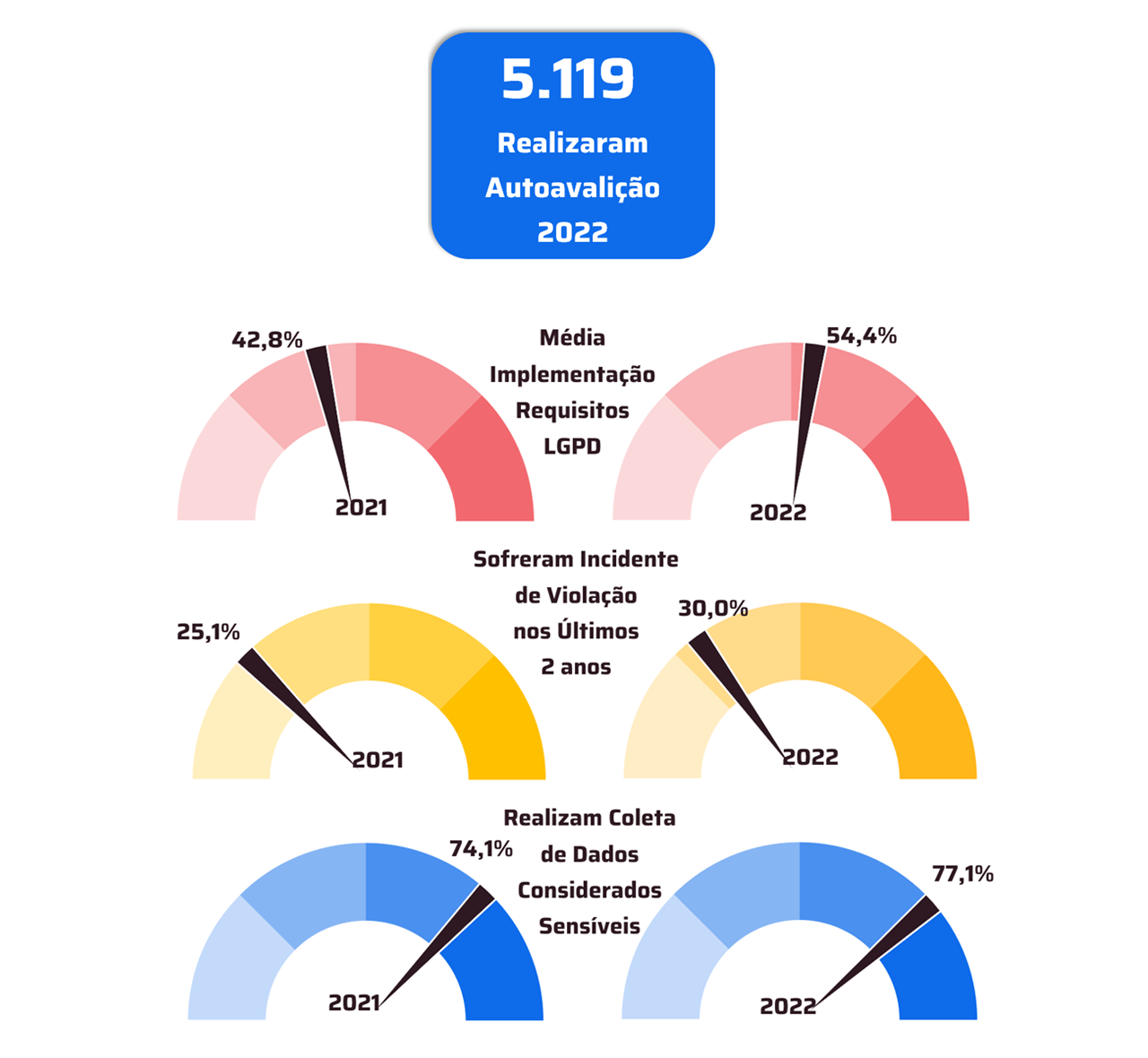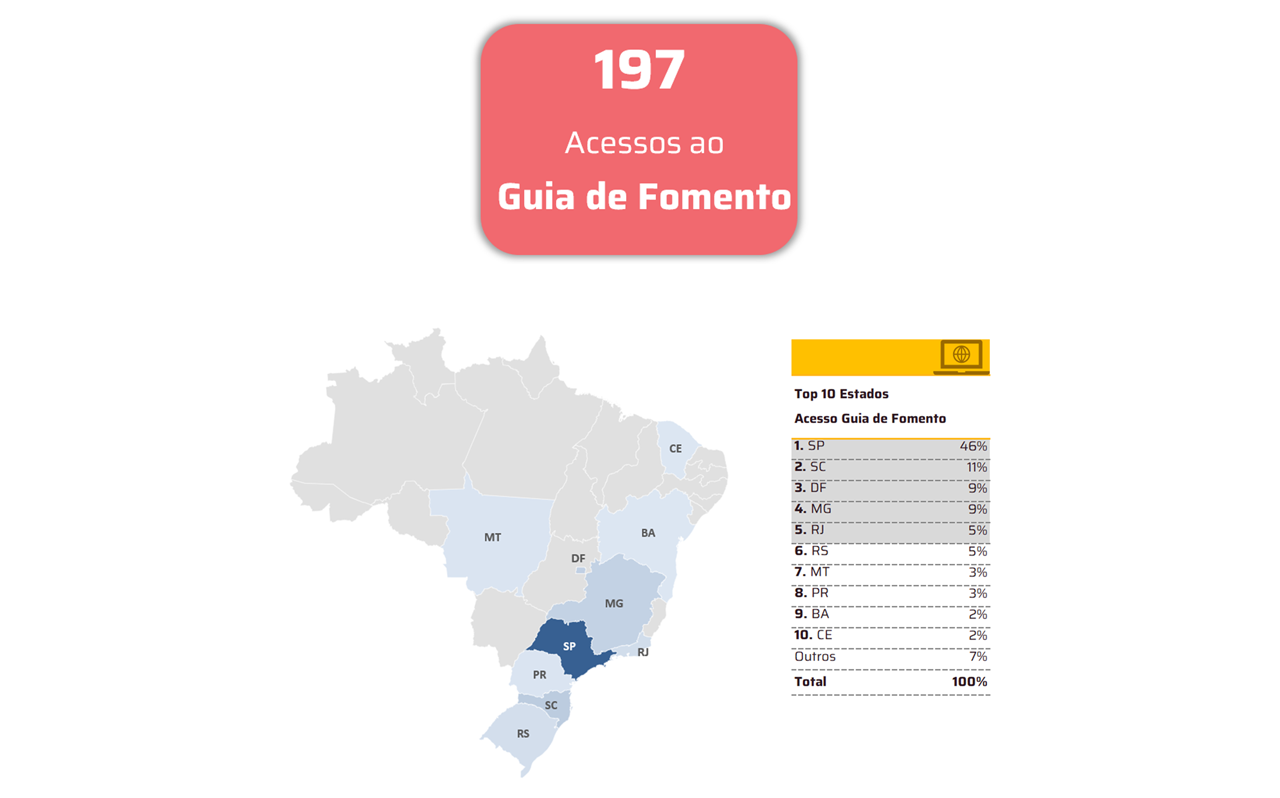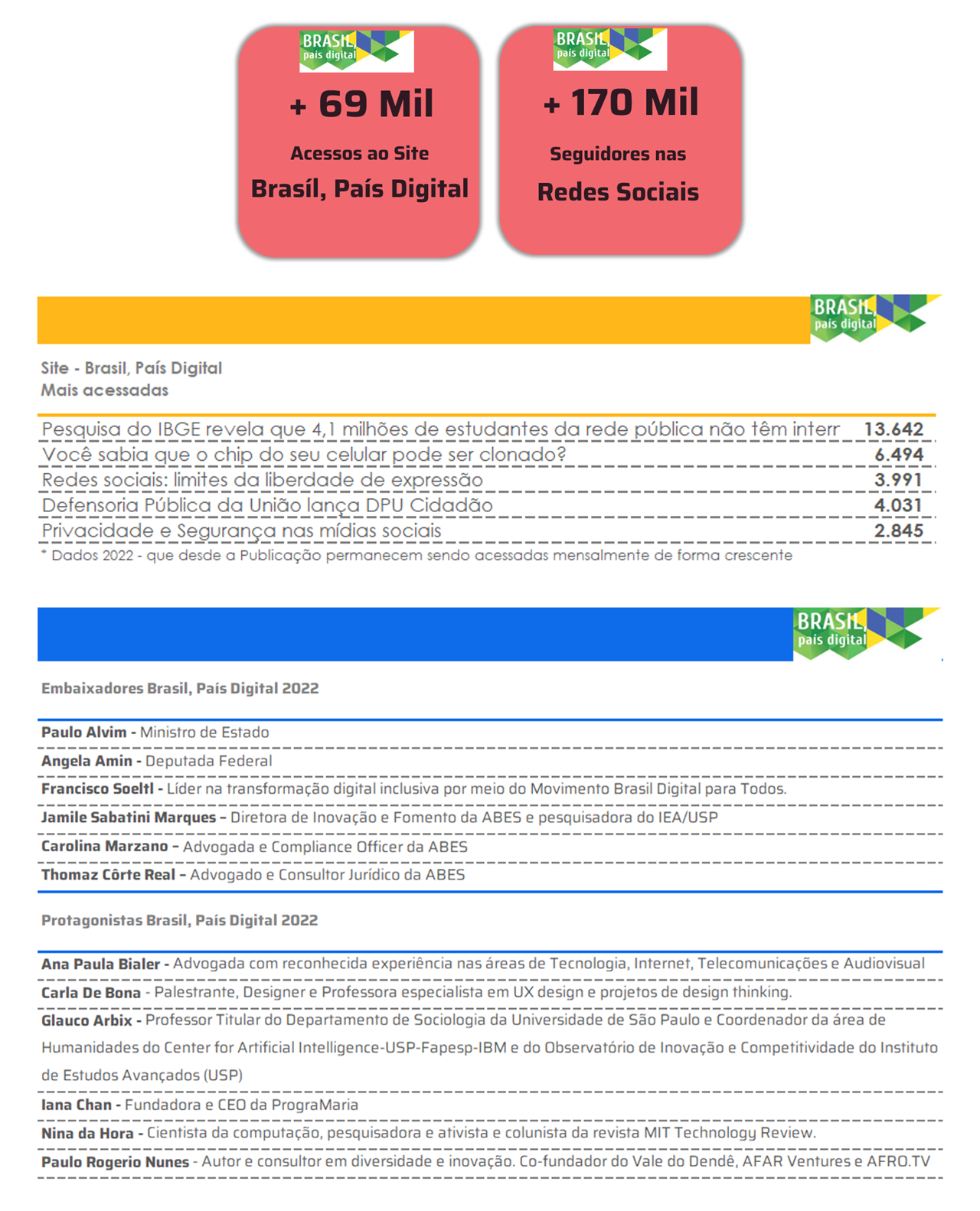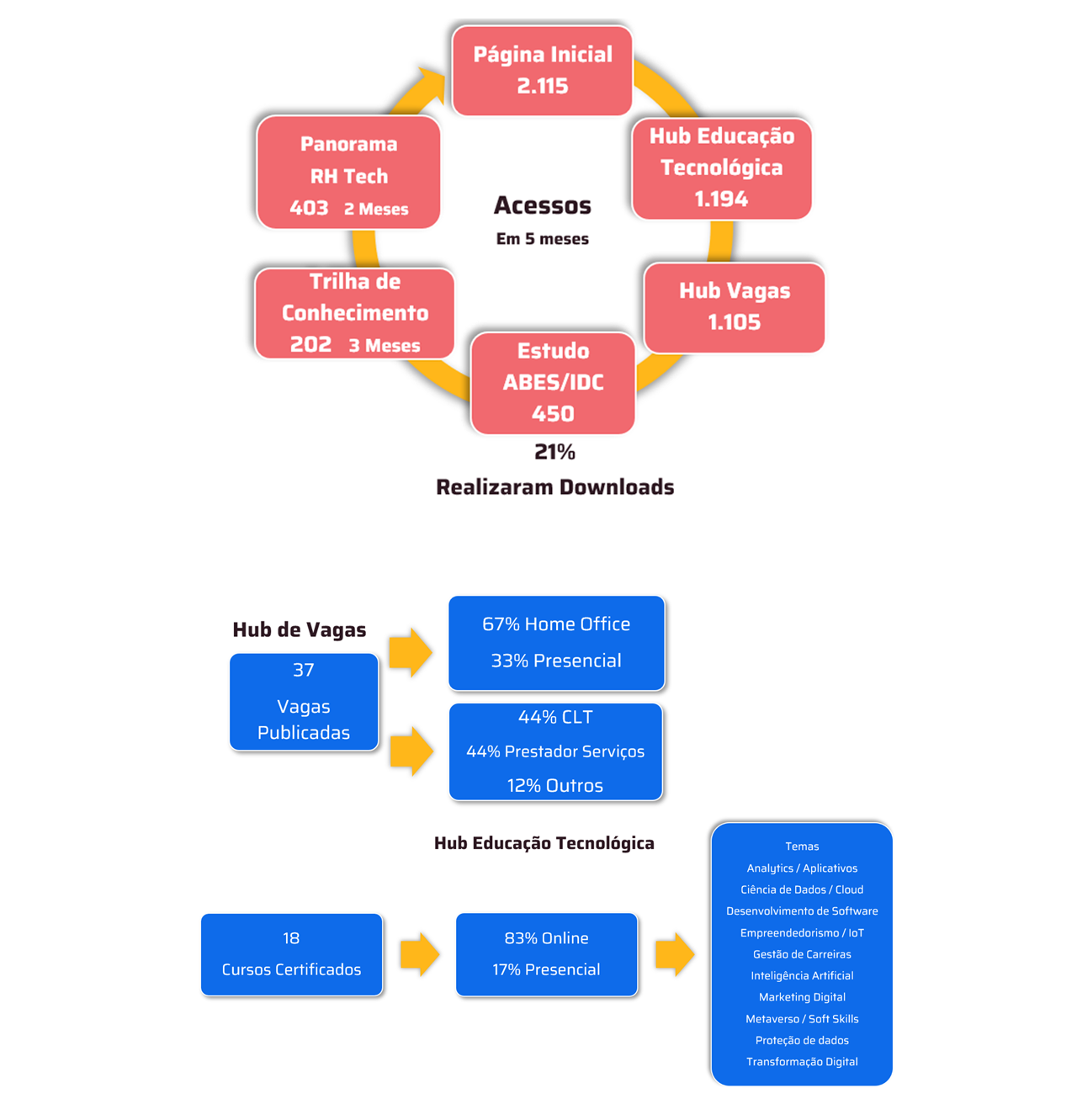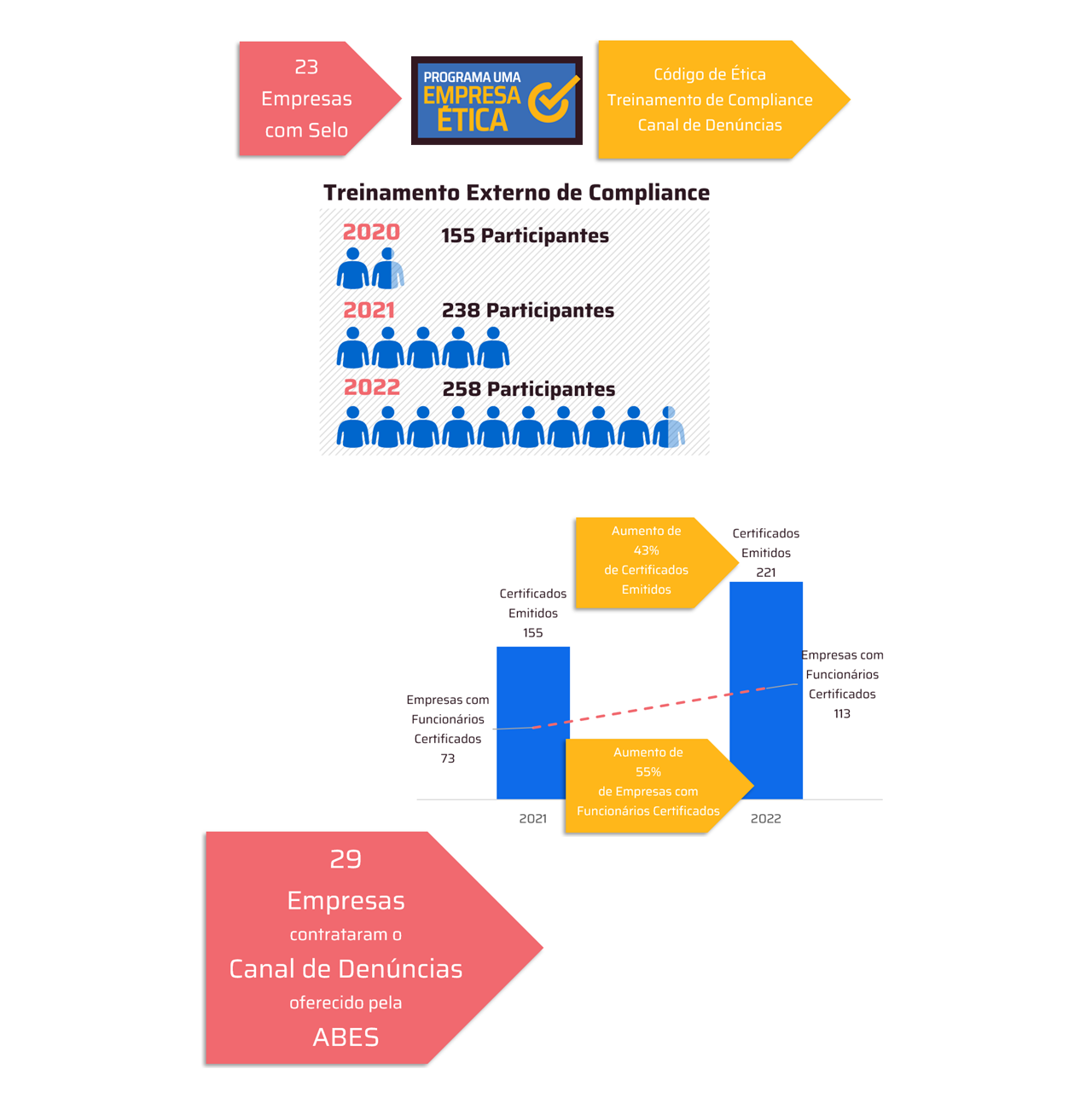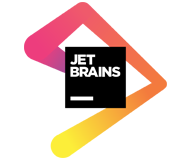LinkedIn (44%) and Instagram (24%) are also used as a reference, according to a study carried out by Alura in partnership with the research institute VOX We Study People
"Technology moves the world". Steve Jobs' phrase, even today, remains timeless and is present in the daily life of the job market, companies and in the careers of several professionals. To understand its impacts, the alura, in partnership with the research institute VOX We Study People, carried out a study that mapped the behavior of about 700 technology students. According to the survey, 70% of respondents turn to YouTube to search for IT content, followed by LinkedIn (44%) and Instagram (24%).
Also according to the report, when asked where they look for advanced IT content, Youtube follows in first place, with 30%, followed by Google (27%), the Stack Overflow portal (20%) and the Alura technology school (14%).
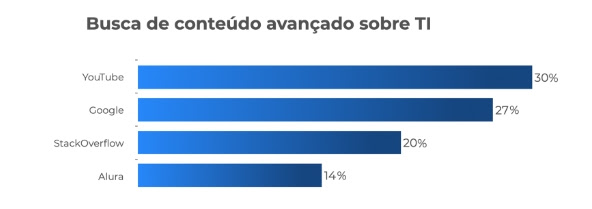
For Paulo Silveira, CEO of Alura, there is currently a lot of material available on the internet for free, in addition to several schools and technology courses. In this sea of options, the important thing is to start small and use a guide to guide each step, even if the route changes along the way.
“Guides like roadmap.sh (in English) and the recently released TechGuide.sh (in Portuguese) help in this process. These mechanisms help people to look back and identify everything that has already been done, more than that, to observe that you managed to acquire the planned knowledge. Otherwise, it's very easy to disperse and attack different technologies simultaneously, without going into depth in any of them”, he explains.
For Dora Faggin, director of research at VOX, the qualitative interviews carried out with respondents reveal that YouTube in itself is not exactly new, after all, it is a tool constantly used for study, however, IT students have a very challenging feature: keep up to date.
“Since this is a market that is constantly changing, it is necessary to monitor these innovations, such as a new way of using a certain language or a new tool. Depending on the position these people are in or the level of responsibility of the position, it is mandatory to be on top of these updates and YouTube ends up being an easy way to access and check if these transformations are relevant”, he points out.
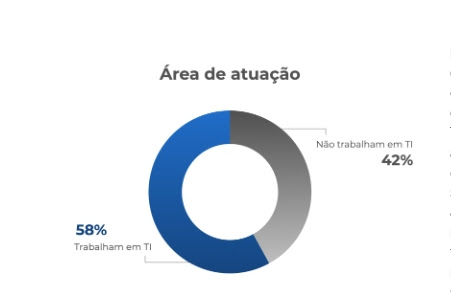 Student profile
Student profile
As for the students' profile, 6 out of 10 respondents are already working in the IT area. Of the 4 who do not work in the area, 2 are in career transition, while the others are students who are not yet working professionally. Of the respondents who still work outside the area, most are occupying positions in the administrative area (44%), engineering (20%), communication and information (11%), among others.
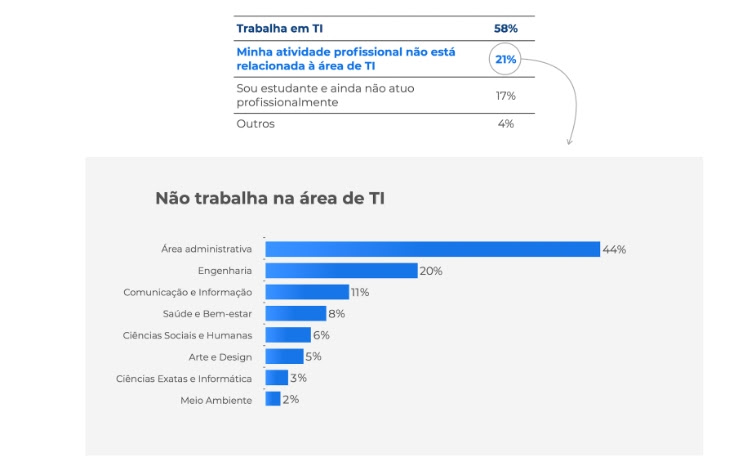 “Most of the students are in the career transition phase, that is, they already have a professional repertoire, but are looking for qualifications to go to the IT area. In this process, it is a mistake for companies to look at these professionals only as 'juniors', since these professionals have a relevant background that should be taken into account, after all, these experiences can be combined with new training and, of course, add much more value to companies' businesses", evaluates Faggin.
“Most of the students are in the career transition phase, that is, they already have a professional repertoire, but are looking for qualifications to go to the IT area. In this process, it is a mistake for companies to look at these professionals only as 'juniors', since these professionals have a relevant background that should be taken into account, after all, these experiences can be combined with new training and, of course, add much more value to companies' businesses", evaluates Faggin.
 Another excerpt from the study reveals that more than 80% of the respondents hold specialist positions in the IT area, while 17% hold management or leadership positions. Within this universe, the position of these professionals is divided into junior (29%), full (25%) and senior (22%). Most respondents classify their knowledge of the area as basic (30%) or intermediate (31%).
Another excerpt from the study reveals that more than 80% of the respondents hold specialist positions in the IT area, while 17% hold management or leadership positions. Within this universe, the position of these professionals is divided into junior (29%), full (25%) and senior (22%). Most respondents classify their knowledge of the area as basic (30%) or intermediate (31%).
“The data reveal a very big pain in the technology market: the development of technology professionals. Some companies insistently look for people with a large professional background and forget that the junior of today is the senior of tomorrow. It is up to the companies to decide if they only want to compete for the highly sought after senior talent in the market or if they are willing to develop the new professionals in the market. The survey also reveals that the vast majority of professionals who study technology are in the basic or intermediate level, reinforcing the urgency of creating environments for learning and evolution within companies”, ponders Silveira.
Still thinking about professional development, the majority (46%) of respondents are interested in studying higher education in the area of distance technology in the short or medium term.
“University education continues to be relevant, mainly for professionals to continue developing their careers and seek higher positions and positions in companies. College is one of the main possibilities for technology people to find depth in their studies. Instead of becoming hostages of their tools, frameworks and languages, they start to really understand what happens behind the scenes. This understanding is a fundamental step towards seniority”, he assesses.
Routines and challenges of those who study technology
Social networks also permeate students' study habits. According to the study, they access about five social networks on average, with WhatsApp (88%) and YouTube (82%) being the most used. Still talking about routine, the majority (30%) of respondents study remotely about 3 to 4 times a week, primarily at night (66%). To dedicate themselves to teaching, they do their best to study at home (96%) and at the office (16%).
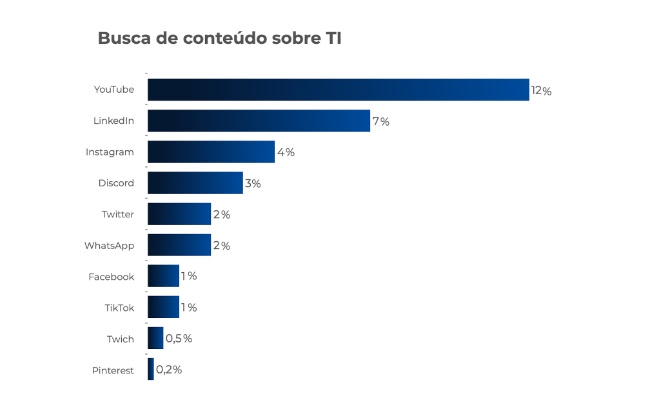 Among the challenges to maintain a study routine, respondents highlight the difficulty of finding free time (57%), maintaining focus and concentration (48%), tiredness (37%) and motivation (28%). Difficulty that is mitigated through communities, such as Discord, for example. At Alura, this platform concentrates around 60,000 people, with an average of 200 new arrivals per day. Of this large group, 30% usually chats daily.
Among the challenges to maintain a study routine, respondents highlight the difficulty of finding free time (57%), maintaining focus and concentration (48%), tiredness (37%) and motivation (28%). Difficulty that is mitigated through communities, such as Discord, for example. At Alura, this platform concentrates around 60,000 people, with an average of 200 new arrivals per day. Of this large group, 30% usually chats daily.
“These exchange places, being dynamic and democratic, are essential for people to be able to share doubts, stories and day-to-day experiences. It is a powerful tool not only for building knowledge, but for creating relationships between people who have common guides and goals. In an online environment, studying and practicing at a distance, this sense of belonging to a community is fundamental”, evaluates Paulo Silveira, CEO of Alura.
According to Dora, working with research brings several lessons to businesses and people involved in the day-to-day activities of companies. “They can use the data as tools to revise strategies and support communities – in this case, students. Whether on the quantitative side (objective data) or qualitative (subjective behavioral data), we were able to understand in depth the respondents' pain and work on top of that to deliver value and improve processes", he explains.
about the search
The qualitative and quantitative research aimed to understand the public of technology students and how they are inserted in the IT courses market There were 690 respondents in the quantitative research and 30 interviews with people between 19 and 62 years old throughout the national territory and from all the genres.





